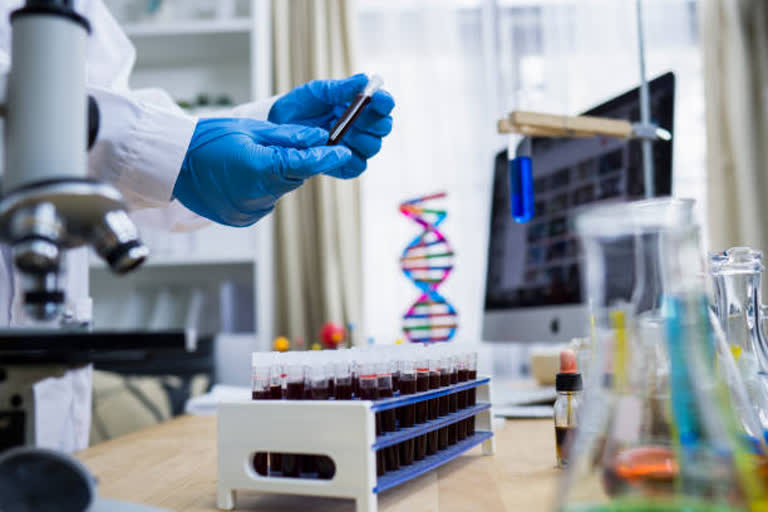Melbourne (Australia): Not all Australians with cancer are getting the fertility care they need. In 2022, it is predicted more than 8,200 Australians under 40 in their reproductive years will be diagnosed with cancer. This is more than double the rate in the 1980s. The good news is more men, women and children than ever are surviving cancer. This is due to earlier diagnosis and more successful cancer treatments.
Now over 85 per cent of patients under 40 will still be alive five years after their cancer diagnosis. However, many of them might not be aware of the potential decrease in fertility after cancer treatments, and their options for protecting their future ability to have children. Some estimates suggest only half of people with cancer have a documented fertility preservation discussion.
How cancer treatment can affect fertility: Both cancer and its treatments can reduce fertility for all genders. Chemotherapy, radiation and surgery may permanently reduce the number of egg and sperm cells, which may lead to difficulty conceiving in the future. The store of eggs is laid down before birth, and to date there is no good evidence eggs can be replenished.
Chemotherapy chemical drug treatments that attack cancer cells may also harm the delicate egg and sperm cells and reduce their numbers. Likewise, radiotherapy directed radiation energy at cancer cells may scatter and cause scarring of the ovaries and testicular tissue. Sometimes, with high-dose chemotherapy or radiotherapy, all the eggs, sperm cells and supporting tissues may be destroyed. Direct surgery to reproductive organs may lead to reduced fertility. Often, it is not known what the full effect of cancer treatment will be on fertility, and the effect may be different for each individual.
What is oncofertility, and how can it help? Oncofertility is a relatively recently established medical field that provides options for fertility preservation. Addressing quality of life from a biological, psychological and social perspective acknowledges the potential distress that reduced fertility might cause cancer survivors.
Advances in assisted reproductive technology, such as vitrification (fast freezing), means we can preserve eggs, embryos, ovarian tissue, sperm and testicular tissue for future use. This is known as medical fertility preservation. Fertility preservation may be someone's best chance for biological children in the future. Oncofertility considers an individual's future goals for family and parenthood, alongside cancer treatments.
Also read: Researchers using magnetic bacteria to fight tumors
Four new things we know about oncofertility: This year, the Clinical Oncology Society of Australia (COSA) updated its guidelines for fertility preservation for people with cancer. It is based on advice from Australian experts including medical specialists, scientific researchers, psychologists, health managers and nurses, public consultation and feedback.
The COSA guidelines discuss fertility treatment options, referral pathways and psychological support. They also cover contraception during cancer treatment (to avoid disruption to the treatment regimen), interrupting hormone treatment to conceive, assisted reproduction, and the risk of cancer recurrence. This guideline aims to support conception and pregnancy in cancer survivors.
In our paper published today in the Medical Journal of Australia we update medical practitioners on the latest in oncofertility knowledge: that pregnancy rates after freezing eggs are similar to those after freezing embryos, with live birth rates of 46 per cent and 54 per cent respectively in one study ovarian tissue freezing and grafting for females is no longer considered experimental, however special oversight for pre-pubertal girls under the age of 13 years is recommended.
This is because clinical experience of patients who were 20 years of age or younger at the time of fertility preservation remains limited extracting sperm from testicular tissue by microsurgery may be considered for men who have already undergone cancer treatment and who were previously thought to have no sperm testicular tissue freezing in pre-pubertal boys is currently considered experimental as there are no mature sperm cells. Clinical ethical oversight is required while new methods are trialed to use these early cells for fertility.
Timing is important: Once a diagnosis of cancer is made, discussion and decisions around fertility can be urgent and time-critical. This is to allow time for referral to an oncofertility unit, appropriate counselling and informed decision-making to occur. It takes time to plan and perform fertility preservation (for example, eggs may take around 14 days to grow and collect for freezing) so promptness is important to prevent delays in cancer treatment.
Educating patients: Not everyone of child-producing age who is diagnosed with cancer is referred to oncofertility health services promptly, if at all. This can lead to feelings of conflict and regret. Our team of fertility specialists from the Royal Women's and Royal Children's Hospitals collaborated with the Western and Central Melbourne Integrated Cancer Service to develop a suite of animated patient education videos to address this gap.
The Fertility after Cancer videos available in multiple languages, reviewed by cancer patients and support groups, age-appropriate for children, adolescents, adults, and their families discuss fertility preservation options, risks, benefits and alternatives. Our goal is that all Australians with cancer have access to information, and support, regarding the impact of cancer treatments on their future fertility. (PTI)
(This story has not been edited by ETV Bharat and is auto-generated from a syndicated feed.)



